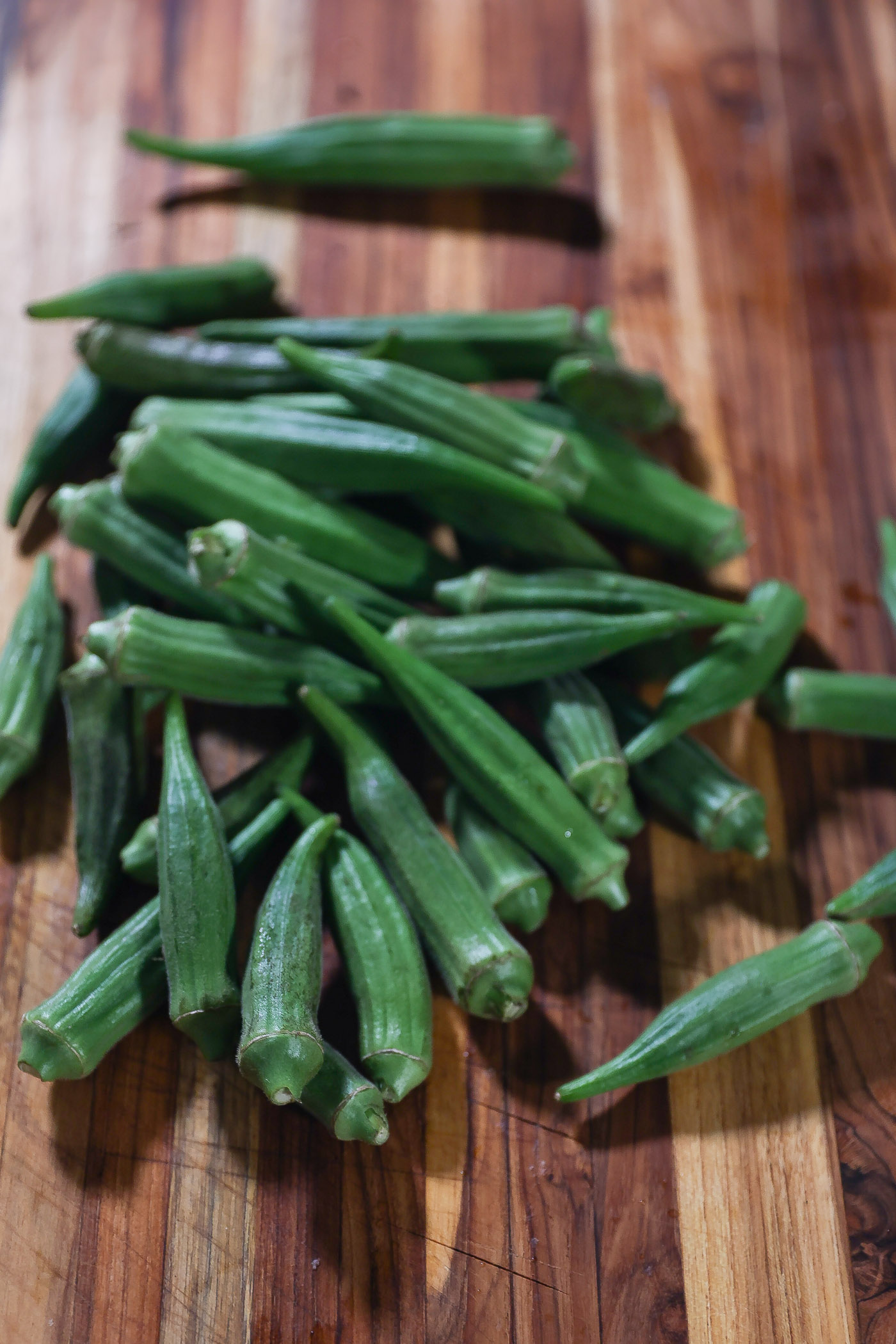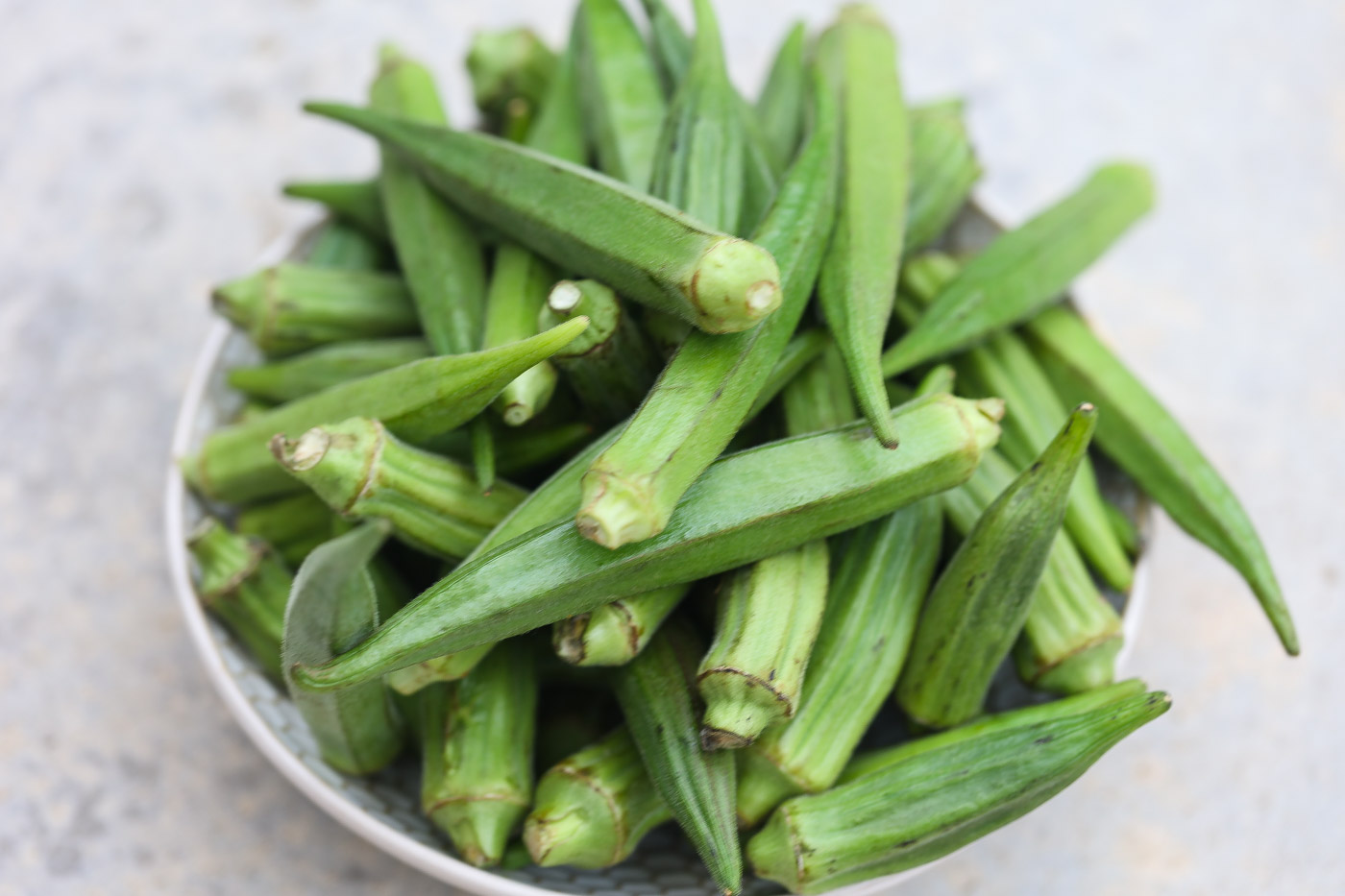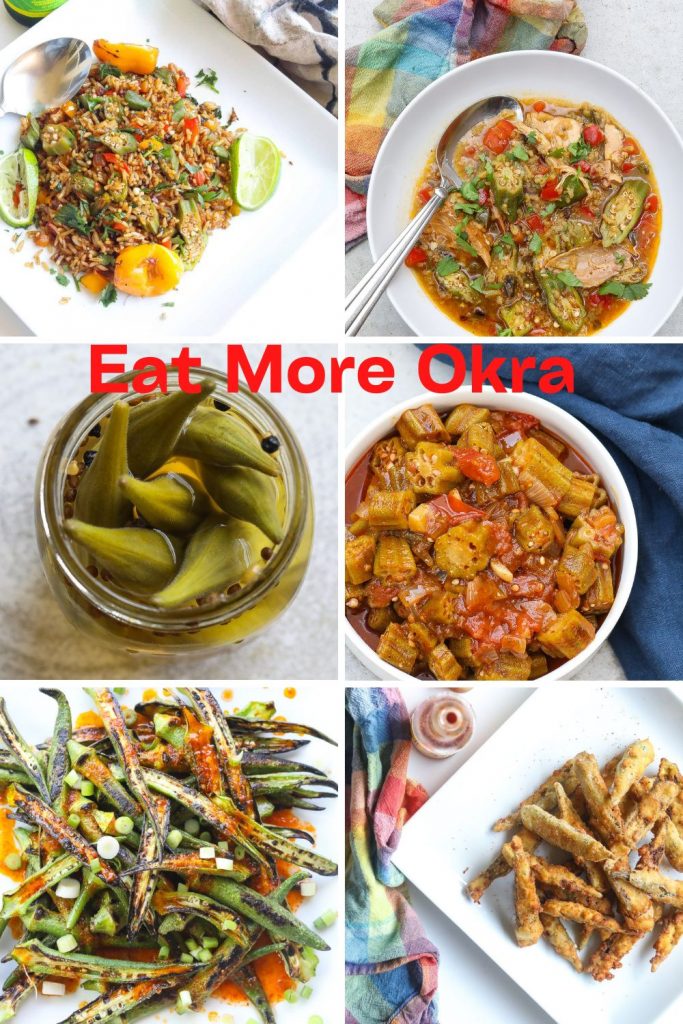Welcome to my kitchen, where soul food recipes collide with fresh veggies from the garden! This week I'm focusing on one of my favorite vegetables-- okra. It's a Southern soul food staple.
Consuming okra in big amounts is a must!!! From adding texture and flavor to dishes like gumbo or steaming them alongside a juicy piece of chicken, okra is an incredibly versatile vegetable that you need in your diet. Regardless of whether you're vegan or meat-eater or just want something delicious to eat; I'm here to help make eating okra easier than ever! Come join me as we explore all the wonderful dishes this incredible vegetable has to offer.
What Is Okra?

Okra is a flowering plant that is also known as "lady's finger" or "bamia". The plant is grown for its edible green seed pods, which are used in many cuisines around the world.
It is often used as a thickening agent in dishes due to its mucilaginous properties. Okra is a popular vegetable in many countries, including India, Africa, the Middle East, and the Southern United States.
The Origin of Okra
Okra originated from the motherland, Africa. It is a flowering plant that produces edible seed pods. Those pods, aka "Lady Fingers" are a key ingredient in many beloved and iconic soul dishes in the deep South.
Okra is often used in soups and stews, and they can also be fried or pickled. In my humble opinion okra gets a bad rap due to the "slime" factor people associate with it.
The slime is due to the presence of mucilage which can be controlled or eliminated. Mucilege is what helps to thicken soup and stew recipes, making okra a popular ingredient in many traditional soul food dishes.
Okra has been around forever, since like BC times in Ethiopia but eventually made its way to West Africa, where it was eventually brought to America by enslaved Africans. Outside of rice, okra might be the most important food in the history of African foodways.
Okra is versatile, grows quickly and in abundance in hot conditions, and is deeply rooted in African culinary history.
Why Is Okra Slimy
Okra is slimy due to the presence of a natural thickening agent called mucilage. Mucilage is a gel-like substance that is released when the okra pods are cut or cooked. It is produced by specialized cells in the okra plant called mucilage cells.
Mucilage is a valuable addition to many dishes because it can thicken soups, stews, and sauces. However, the slimy texture can be off-putting to some people. To reduce the sliminess of okra, some people recommend soaking it in vinegar or lemon juice before cooking. Others suggest cooking okra at high heat for a short period of time to minimize the release of mucilage.
Despite its sliminess, okra is a delicious vegetable that is a staple in many cuisines around the world. Its unique texture is part of what makes it so versatile and interesting to cook with.
How To Get Rid of Okra's Slime
Okra's sliminess can be reduced or eliminated by following these tips:
- Choose small pods: A smaller okra pod will have less mucilage than a larger one, so they tend to be less slimy. Look for okra pods that are no longer than 3 inches.
- Dry okra thoroughly: Before cutting or cooking okra, make sure it is completely dry. Moisture can exacerbate the sliminess.
- Cook at high heat: Cooking okra at high heat for a short period of time can minimize the release of mucilage. Try sautéing, roasting, or grilling okra instead of boiling it.
- Add acid: Adding acid, such as lemon juice or vinegar, can help neutralize the mucilage and reduce the sliminess. Try marinating okra in a mixture of acid and oil before cooking. The acidity in canned tomatoes or tomato sauce are quite effective at limiting the slime factor.
- Blanch okra: Blanching okra before cooking can help reduce the sliminess. To do this, bring a pot of salted water to a boil, add the okra, and cook for 2-3 minutes. Drain and pat dry before using in your recipe.
How To Cook Okra
Summertime is okra time and whether you grow your own or buy from grocery stores or farmer's market there are so many options for recipes. Okra is great stewed, roasted, grilled, and is often the case down South - fried!
If you're concerned about the slime checkout these different ways of cooking okra without slime.
What Are The Different Types of Okra Out There
Green okra is the most popular, but there are several types of okra, which vary in size, shape, and color. Some of the most common types of okra include:
- Clemson Spineless: This is the most widely grown variety of okra in the United States. It has smooth, spineless pods and is known for its high yield.
- Emerald: This variety has dark green pods that are slightly ribbed. It is a popular variety in the Southern United States and is often used in gumbo.
- Annie Oakley II: This variety is known for its tender pods and is a good choice for growing in cooler climates.
- Hill Country Heirloom Red: This variety has red pods and is popular in Texas and other parts of the Southern United States.
- Jambalaya: This is a hybrid variety that has green pods that are slightly ribbed and is popular in the United States and other countries.
- Burgundy: Think purple okra, this variety has deep red pods that turn green when cooked. It is often used for ornamental purposes as well as for cooking.
- Louisiana Green Velvet: Known for its small, tender pods and excellent flavor. This variety is popular in the southern United States, particularly in Louisiana
These are just a few examples of the many types of okra that are available. The type of okra you choose will depend on your personal preferences and the growing conditions in your
How To Grow Okra On Your Own
Growing okra is a relatively easy process. It's proven that it can thrive in difficult weather conditions whether super arid or very humid climates. Here are the steps to grow okra plants:
- Choose a planting location: Okra thrives in warm weather and full sun, so choose a location that gets plenty of direct sunlight and has well-draining soil.
- Prepare the soil: Okra prefers soil that is rich in organic matter. Add compost or aged manure to the planting area and work it into the soil to a depth of 6-8 inches.
- Plant the seeds: Plant okra seeds 1-2 inches deep and 3-4 inches apart. If you're planting more than one row, space the rows 2-3 feet apart. Water the seeds well after planting.
- Water regularly: Okra needs consistent moisture to grow, so water the plants regularly to keep the soil moist but not waterlogged.
- Fertilize: Okra benefits from regular fertilization with a balanced fertilizer. Apply fertilizer every 4-6 weeks during the growing season.
- Harvest the pods: Okra pods are ready to harvest when they are 2-4 inches long and tender. Harvest the pods regularly to encourage the plant to continue producing.
Eating Okra Frequently Asked Questions
How do I choose fresh okra?
When choosing fresh okra, look for pods that are firm and bright green. Avoid pods that are soft, discolored, or have brown spots. The pods should also be small to medium in size, as larger pods can be tough and woody.
Does okra have a slimy texture?
Yes, okra is known for its slimy texture when cooked. This is due to the mucilage, a gel-like substance that is released when the pods are cooked. Some people enjoy this texture, while others find it unpleasant.
Can okra be eaten raw?
Yes, technically okra can be eaten raw, and for the hardcore raw food enthusiasts many well to get the full benefit of the bright green pods. But for me I'm enjoying cooked okra only or pickled okra for that matter. Raw okra has a nice crunchy texture but that flavor is too bitter for da kid!
Try some of my favorite okra recipes:
I cook okra in many of the same ways I cook green beans - stewed, baked, etc.
My grandmother made classic stewed okra and tomatoes seem like every Sunday during those Texas summers. I wasn't ready for it then, but I'm here for it anytime now! Chickpea tomato salad is another one and is similar.
But I'm for okra anytime, anyway including probably my goto recipe grilled okra. You also can't talk okra and soul food without mentioning fried okra.
The beauty of cooking okra is it's simplicity. It doesn't require much time, technique, or many ingredients. Roasted Okra is the perfect example of this as is this ridiculously flavored charred okra with harissa sauce.
For ideas which feature okra as more of a secondary ingredient try the okra fried rice, okra soup with smoked chicken, field peas and okra, and Instant Pot Gumbo.

For other okra soul food ideas worth trying, checkout:
- Pickled Okra
- Purple Hull Peas and Okra
- Collard Greens and Okra Salad
- Blistered Okra and Cherry Tomatoes
Okra is a staple in Soul Food cuisine that cannot be overlooked. I can attest to the versatility and deliciousness of this humble vegetable. Whether boiled, fried, or used in stews and soups, okra adds flavor to any dish.
Its unique slimy texture, which some may find off-putting, is actually a valuable addition to dishes that require a thickening agent. With its rich history and cultural significance, okra is a must-have ingredient in any Soul Food kitchen. So next time you're in the mood for some Southern comfort food, be sure to add some okra to the mix and taste the magic for yourself.

